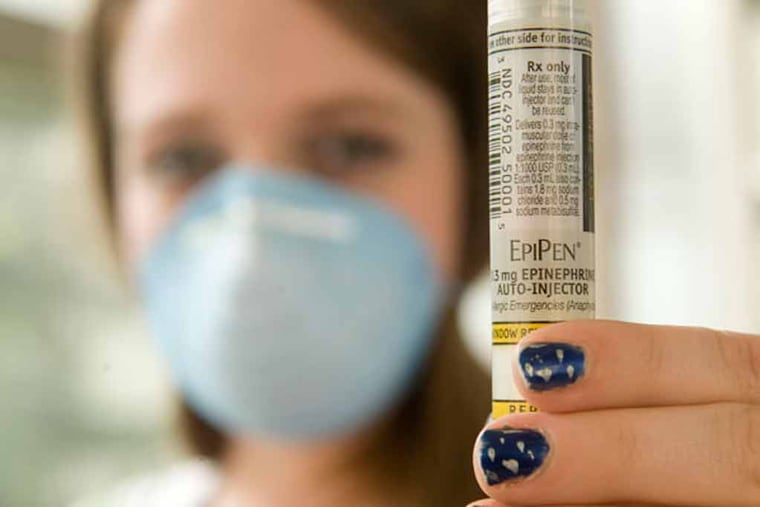EpiPens can be a lifesaver, but they also can cause injury
Quick-acting EpiPens can save kids’ lives during severe allergic reactions, but the devices may pose an unexpected risk of serious cuts and other injuries.

SEATTLE — Quick-acting EpiPens can save kids' lives during severe allergic reactions, but the devices may pose an unexpected risk of serious cuts and other injuries, a Seattle emergency-medicine doctor has found.
More than two dozen reports of lacerations up to 3 inches long and bent needles embedded like fish hooks under the skin were among wounds documented after email and online surveys by Dr. Julie C. Brown of Seattle Children's Hospital.
"We were surprised by the severity of some of these injuries," said Brown, whose study was published recently in the Annals of Emergency Medicine.
They occurred among children who jerked or thrashed as caregivers used epinephrine auto-injectors to halt anaphylaxis, a life-threatening allergic reaction.
Nationwide, food allergies affect nearly 6 million children under 18, research shows.
The problem was detected with use of the EpiPen, the top-selling device that accounts for 2.5 million of the 4.7 million prescriptions for injectable epinephrine in the U.S. each year, according to IMS Health. No injuries were associated with Auvi-Q, a recently introduced auto-injector with a self-retracting needle, Brown said.
That may be because the EpiPen is in much wider use, or because instructions advise users to hold the needle in place for 10 seconds to ensure the drug is injected, Brown said.
Research shows the medication may be dispensed within the first few seconds, she said. In addition, she said caregivers must be warned to restrain young children before using the EpiPen.
"We can't think of anywhere else in pediatric medicine where we would hold a needle in an awake child's leg for 10 seconds," she said.
Julie Knell, a spokeswoman for Mylan Pharmaceuticals, which makes the EpiPen, said there are limitations to Brown's study, which relied on parent or doctor recollections. Estimates of the length of the wounds may not be accurate, and not all of the devices were analyzed to confirm the needle was bent during use, she said.
The study "highlights the importance of continued education and practice with prescribed devices for those managing potentially life-threatening (severe) allergies," Knell said in a statement.
Dr. Kevin Dooms, a Bellevue, Wash., allergist affiliated with Swedish Medical Center, said the study flags potential injuries that might have been missed in the past.
"Myself, I haven't seen any patients who've had this happen, but it's interesting to see so many stories aggregated," he said.
Neither Dooms nor Brown recommends ignoring the EpiPen's 10-second prescribing information approved by the Food and Drug Administration, but say the injury reports raise new questions.
The issue came to Brown's attention when she treated a Seattle-area preschooler who had an allergic reaction and suffered a bad cut from the EpiPen. Brown emailed colleagues, and immediately heard about another injury.
"That's when I knew I was onto something," she said.
She surveyed two emergency medicine email-discussion lists and eight Facebook sites dedicated to food allergies, which reached about 20,000 people.
Brown identified 17 cases of leg lacerations and five other needle-related traumas between 2005 and 2014, plus three other cases that had to be excluded. The cases occurred in children ages 1 to 11, with most under age 6.
Both Brown and Dooms were quick to caution the injury reports shouldn't discourage people from using EpiPens or any other auto-injector.
"Ultimately, epinephrine is going to save your kid's life and that's more important than a leg laceration," she said.
JoNel Aleccia: 206-464-2906 or jaleccia@seattletimes.com
———
©2015 The Seattle Times
Visit The Seattle Times at www.seattletimes.com
Distributed by Tribune Content Agency, LLC.